What you never knew about Artificial intelligence
History
The origins of AI and Robotics
More than 50 years ago, the first scientists came up with the idea to copy the human nervous system and perhaps also the intelligence of the homo sapiens into an artificial variant. This is far from an easy idea. It started that simple with chess and vapor programs. With these two programs, there is already a lot of looking at KI. The Computer itself must reason which move it was to make and what the consequences were. The ultimate goal of all research would be to become an Artificial Neural Network (NN Further explanation page in the chapter: Neutral Networks) that could imitate the function of the brain. The idea was very simple in itself: by using the networks as many examples as possible so that the cells themselves could make the connections. Just like a man who processes it in his brain.
Initially, biologists, mathematicians, and philosophers thought the idea behind such a mirror image of the human nervous system a huge challenge has given the future benefits of such an NN. Yet there were other AI partners who were ahead of the NNs. You should think of the Deep Blue chess computer. The mega-pc that, stuffed with analyzes of human reasoning, world champion Kasparov made it very difficult in his match against the AI.
The first useful applications of NNs
With some peaks and valleys, the NN's only gained a firm foothold in the late 1980s. Massive mountain data made it more and more difficult for a man to even pass on sensible information from a large mush. Let alone see connections in it. Again science went in search of a solution. And in 1980 the first pattern recognizers were manufactured. These were meant to recognize patterns and sequences from the large mass of information and to rearrange them. These translation machines came on the market under the name perceptrons. With the first three programs (chess and vapor programs, translation machines, perceptrons) the first three main streams were given shape. These were: problem-solving, computer linguistics and automatic pattern recognition, or character recognition. With a computer, linguistics is actually the branch of the science, which deals with all programming techniques for computer processing of information written in human language and collected by humans. Computational linguistics forms the overlapping area between computer science (computer science) and linguistics (linguistics).
The whole Cymax of the NNs in the 80s gave a lot of hope for the future, but in the end, it remained partly. Later there were two other streams, which were more theoretical in nature. These are automatic proofing and automatic programming. The computer then writes out of a problem specification, wholly or partly it's own programs. Subsequently, splits occurred in further specifications and research areas. Now, once arrived in the next century, little progress has been made in the AI. Though there are thousands of programs written on it that are extremely useful and useful.
Robots
When people hear the name robot, many people immediately think of the star wars movies that robots like R2-D2 and C-3PO (see photo above) appear in. Until now, these robots belong to the real science fiction. But will that always remain so? Nowadays many robots are used in industry to make things easier for people. All routine chores are now carried out in the industry by robotic arms.
The current physical side of robots
The robots as they exist in the industry do not really have a good physical appearance. But appearance plays no part in this branch of robotics. Especially the stability and reliability of the robots leave much to be desired. Robots will once again play a major role in human entertainment. As is known, two robots have been developed by Sony, the AIBO dog (see photo next page) and the AIBO cat. AIBO stands for Artificial Intelligence Bot. These robots have kwa apparently something in common with the original living animal. Although there are indeed some emotions shown by sensors that the AIBO-Pets have, it remains robots and certainly not comparable to a real pet. Sony will undoubtedly continue to produce these robots that replace the pets. The convenience of man plays a big role in these robots. The risks are of course very large in real animals. They are sensitive to several things such as illness, pain, and hunger. Nor do these robots have to be let out. While thousands of animals die for free in the animal shelter, people nowadays prefer to buy a robot that is easy to switch off when you go on holiday or when you have to go to work. There is no mention of the dog's outlets. People are concerned about the love of the pet. Although everyone knows that such a robot shows no natural emotions at all, the robot gives a certain satisfaction and still seems to show love.
Japanese bipeds
Sony has opted for four-legged friends at the AIBOs because it is easier to make a stable robot with four legs than with two legs. We all know that the Japanese are champions in robot making and have developed one that can run on two legs (HONDA, see photo on the right). This robot, however, looks unnatural because it runs very crooked to maintain the balance of the robot. It is a fact that no matter how much the robot can do now, we will always improve to a 'look alike'. There is a natural compulsion that we propagate, whether natural or artificial, that is irrelevant. The compulsion to make a human robot is very big. The most logical method would be to equip the robot with artificial muscles. This is the easiest way to keep the robot upright and in balance. Dutchman Richard Q. van der Linde has already developed such a design. The robot, called BAPS, of which he designed a prototype, runs just like a human being and is equipped with artificial muscles. BAPS stands for Biped with Adjustable Pneumatic Springs, This robot with artificial muscles is a total revolution in the robot world. The muscles also adapt to the circumstances. They always keep the robot upright and in total balance. In principle, the robot can run just like a human being. If the robot, for example, suffers from a lot of headwinds, then it will also adapt to it and use its artificial muscles in such a way that it stays upright. The artificial muscle works as follows. The artificial muscle consists of a rubber hose that stiffens when CO2 gas is being pumped. The overpressure is temporarily stored kinetic energy that is reused. This is roughly equivalent to the action of the human muscle. With this technology, we are thus one step closer to self-thinking and self-running robots.
Why another intelligent being?
The more NNs (Neural Networks explained in the next chapter) you put in a computer, the smarter it becomes. If at some point you come to a point where you can put as many NNs on a computer, you would get a just as intelligent being as a human being. But before you start creating intelligent beings, you must of course first ask yourself why we want to make an intelligent life. Why do we need another intelligent life if we are already intelligent? Is it ethically justified if we put another intelligent being on earth? There are many questions that many people have already asked themselves. To reduce the risks, 3 'ground rules' have been made:
A robot may not injure a person and must ensure that something happens to the people around him.
The robot must follow man's orders unless they are contrary to the first rule.
A robot must protect itself against the accidents unless this is in conflict with the first two rules.
With these rules, it is, therefore, possible to have a robot function on your own goals. Suppose there is a big fire somewhere in the city. People are still present on the top floor. The chance that a fireman who enters the building comes out again is 30%, but you also want those people to be saved. It would be very easy now if you had robots physically and mentally built so well that they could enter the building to save the people. That robot is replaceable, which is why it is totally justified in this case to use the robot in this situation. We do not assume a human robot in this situation. If we use a human robot (as many NNs as a human being has neurons) for this situation, we must treat him differently. He gets a feeling, he gets an opinion, he gets a will and he gets his own personality. At that moment, according to the rules, it is no longer justified to send such a robot into the building with the task of saving people while there is a 50% chance that the equipment will burn out and that it will fail. The robot has the same feelings as humans in this case and you can only send them in if the robot is fully protected against the circumstances of a fire and preferably also a risk of collapse. And since you regard robots and humans as equals, in this case, you will also have to administer to a human being who has destroyed a robot the same judicial punishment as people who kill each other.
Because of their greater resistance to disease and human violence, we would have a problem if they bundled together and started fighting... Also, the compulsion to conquering territory and broadening knowledge is part of human knowledge and therefore also of human robots. But then the logical reasoning is: Why would these human robots (with millions of NNs) go at war with us? For centuries psychology knows the fact of racial discrimination. We have thousands of years of history with war after war between different peoples and races. Due to the fact that man would never give himself, man remains feeling superior and the robot will never get its equal rights. You get the simplest form of distinction between the human race and the race 'human' robot that fights for its rights. How long does it take until the robots bundle together and start a war? Not long! And that is immediately the well-known danger behind the robots that move and reason as people do. But we are not there yet. All these future images are known, only it is not assumed that it will come to this. You should not be too sure of this, because you play with our existence as the dominant race that is in control. There are even robots that can think for themselves, even though this is very brief. In 2 years, the first robot with 1/20 of the intelligence of man is expected. According to scientists, in 20 to 30 years the first robot can be developed that has the same neural capacities as a human being.
Neutral Networks (NNs)
What is a Neutral Network?
In principle, neural networks are software programs that are developed for various purposes. An NN is a bit like the human network of nerve cells (neurons) in the brain but is much smaller and less complex in its functioning.
Different cells (neurons) are linked together in an NN. Each connection has a certain 'weight'. Depending on that 'weight', a neuron sends information through to one or more other neurons. All connections that are made a point in the same direction. And that is forwards in the most used NN model.
The program maker who builds the network first analyzes a problem situation depending on the environment. A soft drink factory needs a different template than a bank. The maker chooses a basic model with suitable standard formulas and algorithms for that problem. Then he enters test data. This can be all kinds of data/conditions that are important for the end product (s). On the basis of the desired relationship between outcome and input, the NN learns that something is wrong or good and makes certain connections stronger or weaker.
The system establishes connections itself, using both linear and non-linear connections. The combination of the 2 types of connections provides the added value: the self-correction As the neural network is better trained, the NN corrects itself and the human architect is less suited to the whole.
Theoretical example
A factory that produces glass knows exactly which end product (output) it ultimately wants to have, but the combination of ingredients, weather conditions, quantities and other countless factors (input) can be so incoherently variable and complex that the help of an NN is necessary to keep adjusting the production pattern time and again to get the good result, glass.
power
NN's strength lies in the possibility that a 'well-trained' network can come to its own solutions where a normal computer program does not offer a solution. It is self-learning. NNs are very useful in the recognition of patterns and the matching of many different factors of which it is not clear whether, and how they influence each other. The network is able to devise a strategy without adding an extra formula, model or algorithm. That last characteristic really makes people think. Scientists want to understand that complex network (the network does something, without a 'reason'). And let's be honest, before you let an NN play with huge amounts of money (if you have one) on the financial markets, you want to know if it really works and rather, how it works. Really unclear is the course of the matter in a neutral network not at all because the training is already fixed in advance which connections are the strongest. So it is also clear at first which neurons are addressed more and which are less. But from the moment the system becomes smarter, man can no longer explain certain connections.
How do you train an NN?
The start data with which an NN is trained are usually historical data collected over time. In the beginning is such a
data collection may still be limited, but as the training progresses, the mountain of information grows steadily.
It concerns both input and output data. The system itself establishes the links between input and output. The trick is that an artificial NN is self-learning and can, therefore, make connections that a person does not always find.
Differences between neurons of humans and NN
Human nerve cells are much larger in number than the number of neurons in an artificial NN. A human being has billions of neurons, while an NN has a few hundred neurons. Human neurons are available in many different types and also work much more complex than artificial neurons. For example, an NN gives its signals only in one direction, while human cells do that in both directions. The way of transferring information also differs. A person uses chemical substances for this, in addition to electrical signals. NNs only work with numbers, striped data, and mathematical functions. In man, kanseffecten prove important to reach a decision. In addition, we think in parallel, while an NN only processes serial (cell for a cell) information.
Are NN's intelligent?
Although human brains often can not compete with the final products of an NN, you may not necessarily call such a network intelligent. Reason: people must train an NN, feed on information. From the moment the system is fed with data, it becomes "self-learning." It trains itself and generates solutions. In that context, an NN program is 'intelligent'. But whether an NN can process a human IQ test? The end result may be hidden in the degree of training intensity.
Face recognition
Face recognition belongs to the optical observation, which means systems that are able to 'see'. To use these programs, a digital camera must be on your monitor. The camera "sees" the person sitting at the computer. This image is analyzed by the program and compared with images of previously recorded persons. Programs such as these can be used for security. When an unknown person sits down on the computer, he will not be given access.
This sounds pretty simple, but a lot is involved here. It is not simply to see if two images are the same. Two photos will never be completely the same for one person. You can think of differences in light, posture, expression, hair length, tan and so on. It is difficult for a Computer to make an image from this and to link it to a previously recorded image. The computer uses KI to link these faces.
Translation machines
Translation machines are computers that make a translation of one or more sentences, in which the computer itself composes the sentences on the basis of certain algorithms. You can make a distinction between Machine Assisted Translation (MAT), where the computer is used by human translators for quick retrieval of words and phrases, and Machine Translation (MT), where the computer gives a rough translation and possibly even by people is being improved.
To translate a text from language A to language B you need a detailed analysis of the grammar of both languages. There are no such analyzes yet, which is why it is very difficult to translate texts automatically. For example, the Dutch word \ 'bak ' can mean anything: barrel, (coffee) cup, joke, prison ... In English, these words become different words. An automatic translation program must therefore also know what the text is about. Projects for building translation programs have stalled on this. Perhaps in the future, these issues can be solved with the help of NNs. They scan the text (Input), give a logical interpretation and translate the text (output)
RoboCup
Artificial intelligence is often used to get a robot to draw up a plan on the basis of a task. A good example of this is the Robocup. The RoboCup is a football game, especially for robots. These robots learn from their mistakes, among other things, and that is a typical human characteristic. The football bots can work entirely independently but also communicate with each other via a Wireless LAN in order to consult and take the best action. Each robot makes strategic decisions based on the positions of others. So they have to know where the ball and their fellow players are, determine a route and avoid fellow players. These robots work according to the principle of Sense, Think and Act (observe, think up an action and then execute it). Thinking is done with decision algorithms based on an if / then structure. The robot reasons: if I have the ball, I go towards the goal; if I do not have the ball, I'm going to search for it, and so on. Because he also has to take into account fellow players, weighing factors are built into most decisions. This means that the robot only makes a decision on the basis of a number of positive findings. Only when the robot is in a situation in which a number of predetermined requirements are met, such as possession of the ball, no opponent in the neighborhood, the goal less than two meters away. Only then does the robot get the task of shooting itself?
Chess programs
Chess is a relatively simple problem for the computer because it is relatively easy to describe. The board has 64 fields, in the beginning, there are 32 pieces and each piece has limited freedom of movement. In the starting position, for example, the white player can choose from twenty moves. The black player then also has twenty options. After a move by both players there can be 20x20, that is 400 possible variations on the board and so you can continue. This is basically what chess programs like Deep Blue do. They calculate possible variations and search for the ones that suit you best.
The problem is only that the number of variations after a number of moves is already very large. The current computers are fast enough to be able to take a large number of moves ahead (compared to the past). Deep Blue was able to calculate 200 million variations per second in the match with Kasparov. But speed is not the only thing that a chess program should have it, good programming also plays a role. You have to be able to quickly see that a move is not possible, then you have all the moves that come afterward can no longer be viewed. There is only Artificial Intelligence when the chess program itself determines which moves are relevant and which are not.
Future in KI
The future does not always have to look bright. And that certainly applies to developments in Artificial Intelligence. There are many things that make things easy for people, but there is also a risk to what I had covered in the Robots chapter. The technique can very easily be misused in a way that can be very harmful. Man is capable of much and maybe too much. We must remember that we play with our own lives on a unique planet. It is not ethically justified that we will develop robots with such human knowledge, emotion, and feeling. Such a situation can only turn out negative.
Even more dangerous is the fact that with the development of chips one wants to develop so far until it can be operated so close to the neuron system of a human that one can implant it. This should then happen close to the brain itself for optimal communication. Man would then never have more problems to calculate something and to remember something. Parts of your knowledge are processed via input/output of an NN. Such developments can, of course, offer progress with diseases in the nervous system. In such a case, it would open a new gate in medical science.
But suppose the power of your computer fails. Then suddenly you are someone who hardly understands. If you are lucky, your organic brain has analyzed and learned from the information transfer that took place between the outside world and the mechanical part of the brain. If this all became reality, we would in principle be an organic, self-thinking robot. The organic brain controls us completely. When this is done by a computer stuffed with NNs, we are controlled by means of a technical tour de force and no longer by natural brains and thus a robot with an organic cover (cyborg).
No matter how far the technique is, there will always be people who do not want computers in their heads at all and who are happy with what God has given them. These people therefore also hold the same intelligence as every normal person as we know them today. But as evolution teaches that the strongest and smartest will prevail in society.
When people implant such a computer in their head at birth, a new division takes place in society. You get the people sent by NNs and the ordinary Homo Sapiens. As the half Cyborg will be a lot smarter, society will grow the fastest on this side and people will take an increasingly worse position. Suppose you run a business and there is a vacancy. Who do you assume: A human being driven by NNs with a storage capacity of 10 times as much and more logical as man and also reasoning and organizing 10 times faster? The half-man will overcome and the organic person will have to take a step back into society. How long does it take until people are completely reduced? My ethical opinion about this prospect is that I myself would draw up a number of rules about these techniques. They should be limited to medical purposes. Such techniques can be exploited very quickly. What can influence people negatively. Secondly, we are not falling away all the misery. The NNs in someone's Hooft will have to be a lot resistant. The ordinary organic brain is very sensitive. But the problems of such a machine in your head can also be fatal. Consider the radiation in the air nowadays due to GPS (Global Positioning System) Mobile telephony etc. And then the danger of energy shortage has not even been discussed. Research must first show that the dangers I have just mentioned are not at issue. Until then, it will never be approved by the people of this world. If in the future we should take the step to create intelligent life other than ourselves, let us treat it as our equals and not as our subordinate. All of the above is an image of the future that is scientifically possible. We did not look for miracles as they occur in religions but purely on a scientific basis. These are the visions of the future that inspire me, especially because they are scientifically founded. With the science of what may be waiting for us, mankind must prepare and handle carefully with other intelligent lives (whether made or not).
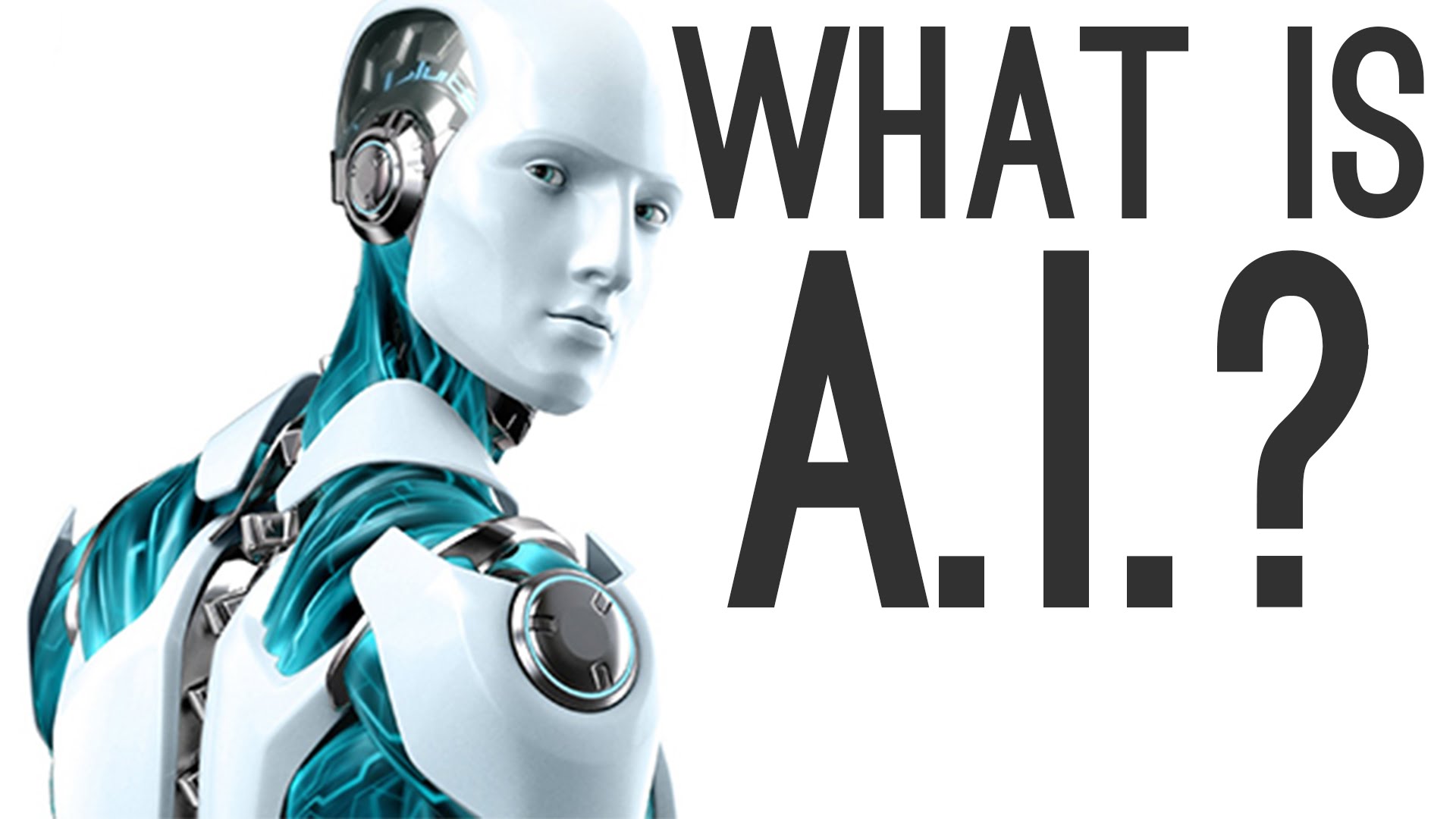
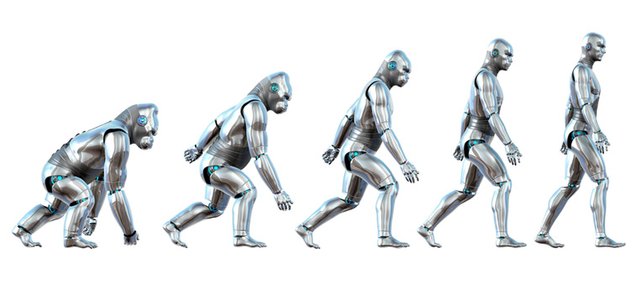
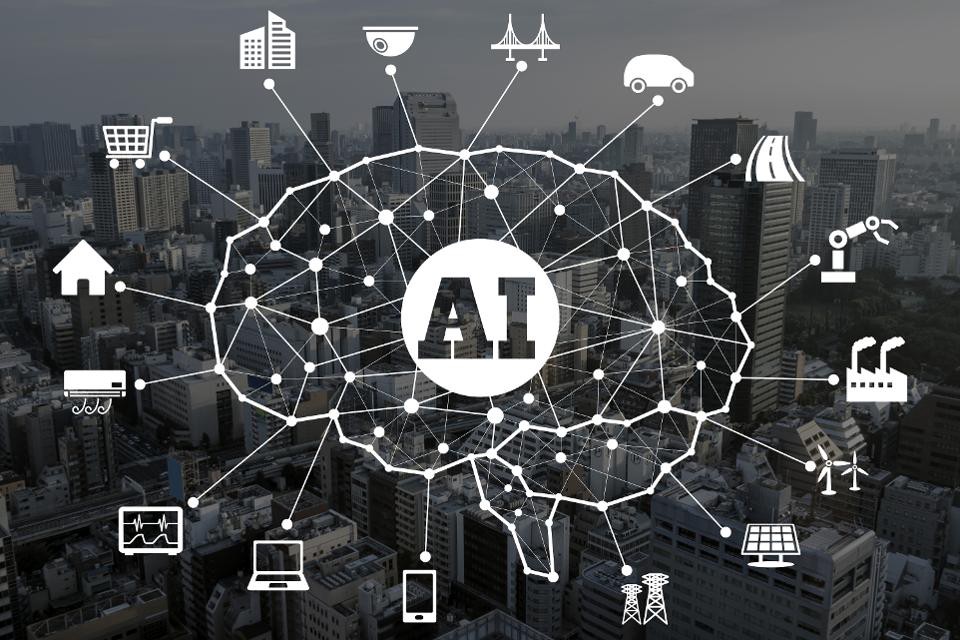
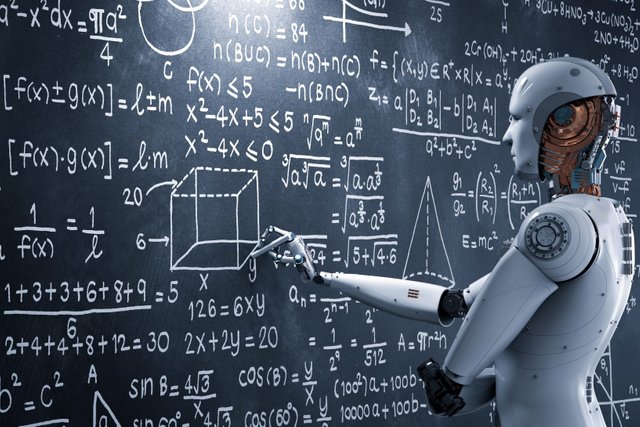
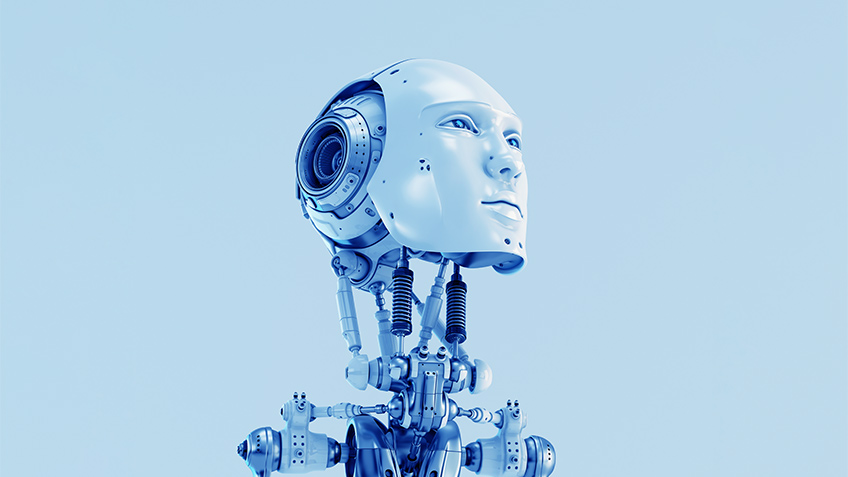
Resteem bot Service! Promote Your New Post.Find New Freinds - Followers - Upvotes. Send 0.400 SBD and your post url in memo and we will resteem your post to 9000+ followers from two different account.@stoneboy and @vimal-gautam.
To listen to the audio version of this article click on the play image.

Brought to you by @tts. If you find it useful please consider upvote this reply.
You got a 1.55% upvote from @postpromoter courtesy of @emmanuelzod!
Want to promote your posts too? Check out the Steem Bot Tracker website for more info. If you would like to support the development of @postpromoter and the bot tracker please vote for @yabapmatt for witness!
Interesting read, followed. I am also very interested in AI. I think what you are discussing in the last paragraph is correct, people who get some kind of neural implant ( the cyborgs) will have a big advantage. I think this will be one way for rich people to get a bigger advantage
Really happy that you liked the post. I personally believe that AI is here to stay. And in the future, it will become one of the leading markets.